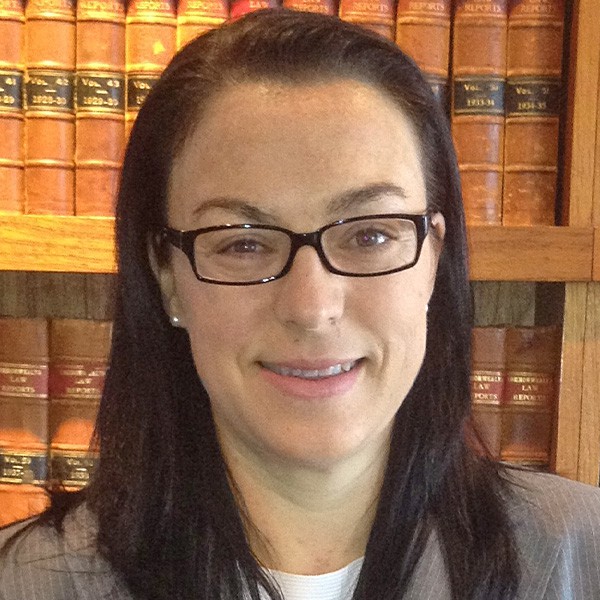For practitioners considering bringing a class action in the Supreme Court of Queensland, these notes provide guidance on these issues:
- when can a class action be commenced
- who are the group members of the class
- pleading the claim and statement of claim, and
- preparing for the first case conference.
Class actions are well known, and well established in the Federal Court and interstate court systems. In Queensland however, the position was somewhat different until the introduction of Part 13A of the Civil Proceedings Act 2011 (the Act) in 2017.
In Queensland, “representative proceedings” provided that one or more persons with the “same interest” in the subject matter of a proceeding, could act as a representative (or representatives) of those with the same interest.
Although whether persons had the “same” interest was often interpreted liberally, a representative proceeding was obviously more limited than the class actions allowed interstate and in the Federal Court.
With the introduction of Part 13A of the Act in 2017, a system of class actions more akin to interstate and federal systems came into force in Queensland.
When can a class action be commenced?
Section 103B(1) of the Act sets out when a representative proceeding under Part 13A can be started. Where each of those requirements are met, a person may start a class action on behalf of the group members. The requirements are that:
- there are seven or more persons with claims against the same person
- the claims of all of those persons are in respect of, or arise out of, the same, similar or related circumstances, and
- the claims of all of those persons give rise to a substantial common issue of law or fact.
Deciding whether each of the “group members” share claims arising from the same or similar circumstances, and which share a substantial common issue, will require careful consideration of the particular facts involved.
That does not mean that the circumstances for each group member need to be the same, or even that all of the issues to be determined need to be the same. Rather, the enquiry is whether there is sufficient similarity in the circumstances, and in the common substantial issue of fact or law, to warrant a representative proceeding.
Where not all of the issues are in common, s103M allows the court to give directions relating to the remaining issues, or to establish a sub-group, including by appointing a representative of the sub-group.
In Motlap v East Coast Lawyers Pty Ltd & Anor,1 Henry J said at [59]:
“[I]n a representative proceeding the fact that there may be a diversity of consequential issues which are not common does not render the proceeding without effectiveness as a means of determining the common issues. To the contrary, assuming there exists a group of plaintiffs who would otherwise initiate separate proceedings, or would wish to do so if they had the resources, there is obvious effectiveness in a singular determination of the common issues. It would avoid the less efficient option of a multiplicity of such proceedings and the repeated arguing and determination of common issues regarding the same impugned content of the disclosure notices and conditional cost agreements.”
Who are the group members?
Section 103A defines “group member” as a member of a group of persons on whose behalf a representative proceeding has been started. A person does not need to consent to be a group member (except certain persons mentioned in s103D(2)), but a person can opt out (s103G).
That means that where a class action has been commenced pursuant to Part 13A, all of the persons who meet the criteria in s103B(1) (that is, who have a claim arising from the same or similar circumstances, and in respect of whom the same substantial common issue of fact or law arises), are automatically group members, unless they opt out, or the court makes relevant directions.
The plaintiff is required to give “opt out” notices to group members in the way ordered after the first case conference.2 The way in which the opt-out notice is to be given is likely to depend on the size of the group and the way in which members are identified or characterised.
Section 103F requires the originating process to “describe or otherwise identify” the group members to whom the class action relates. That is also reflected in Practice Direction 8 of 2023 (PD 8 of 23), paragraph 15(a), which states that the identification may be “by name or characteristic”.
In practice, the group members would usually be described by reference to their common or similar circumstances, and the common substantial issue of law or fact. For example, the claim would identify that the group members are all of those persons who share the particular circumstances, or to whom the particular common question relates.
Pleading the claim and statement of claim
Paragraph 14 of PD 8 of 2023 states that a representative proceeding under Part 13A of the Act is to be commenced by claim, in accordance with the Uniform Civil Procedure Rules 1999 (UCPR) and the Act. Paragraph 15 of PD 8 of 2023, and s103F(1) of the Act require the claim to set out:
- the description or identification of the group members
- the nature of the claims made and relief sought on behalf of group members (the representative party may also state any relief sought on their own behalf)
- the common questions of law or fact that are said to arise.
The particulars of the representative party’s (or parties’) circumstances of course do not need to be precisely the same as each of the group members. Similarly, the substantially common question or questions do not need to be entirely common.
There are likely to be numerous differences in the particular facts which relate to each potential group member, and different questions (or subsidiary questions) might also arise. Indeed, that flexibility is the reason why class actions or proceedings pursuant to Part 13A can be of more utility than the older form of representative proceeding allowed under the UCPR.
That means that in practical terms, the pleader should begin by considering the completed cause of action of the representative party or parties. What are the material facts that give rise to the relief sought for that particular plaintiff or plaintiffs?
It is not necessary, and in fact would be impossible, to plead the material facts as they relate to each potential group member. Rather, the elements referred to above, deriving from s103F(1), convert a normal proceeding into a representative proceeding pursuant to Part 13A.
The claim
If the three matters derived from s103F(1), referred to above, are carefully considered, and set out in the statement of claim, the originating process will identify how the common question affecting members of the group (as defined) gives rise to the relief sought. In that regard, the relief sought, or the claims made, may be more or less general, depending on the nature of the group, and the common questions.
It should be remembered that the particular relief pleaded in the statement of claim should be that of the individual plaintiff or plaintiffs (that is, the representative party or parties).
That relief does not need to marry precisely to the relief said to arise to the group, but should be able to be reconciled with that more general relief. For example, the relief claimed by the group might be that members are entitled to damages, whereas the particular plaintiff may identify a particular sum sought, and the basis for the calculation.
The statement of claim
The statement of claim needs to plead a completed cause of action for the representative party or parties. Again, that will likely be more specific than what is pleaded about group members more generally.
It will however still be necessary to identify the facts that are said to be relevant to how the common questions arise, and how the group members’ entitlement to relief is said to arise. The particulars for each subgroup, or each member, do not necessarily need to be articulated at this time. Indeed, as discussed above, it is likely to be impossible to do so, except for the smallest groups.
Rather, the Act allows for individual (s103N) or non-common issues (s103M) to be determined separately from determination of the common issues. The court can give directions for further proceedings if necessary (s103O) and allow for the settlement of the representative party’s individual claims (s103S).
Preparing for the first case conference
When a representative proceeding is started under Part 13A, the plaintiff is required to email a copy of the claim and statement of claim to the Class Actions List Manager. PD 8 of 2023 provides that the proceeding will be placed on the Class Actions List, and assigned to a Class Actions List Judge.
The Class Actions List Judge will manage a representative proceeding by case conferences which are more informal than directions hearings and can, in appropriate cases, take place by video link or telephone.
PD 8 of 2023 sets out particular things that should occur at the first case conference (some of them being necessary on subsequent occasions also). These include that the parties should be ready to discuss with the Class Actions List Judge the best method of bringing the case to hearing (paragraph 24), that the parties should file a joint position paper (paragraph 26), and that each party is to disclose to each other party any litigation funding agreement (paragraph 27).
The parties should also be ready to deal with the following issues at the first case conference (paragraph 28):
- whether there is any dispute that the matter is properly a representative proceeding
- any issue about standing of any party
- any issue about the description of group members
- any issues about the alleged common questions of fact or law
- any other issue relating to the adequacy of the originating process
- exchange of important documents
- timetable for service of further pleadings
- disclosure and document management
- whether security for costs is sought (and if so, the details of what is sought)
- referral to alternative dispute resolution, and
- any protocol for communication with unrepresented group members.
Later case conferences also require a joint position paper, and will determine issues including when the opt-out notices for group members are to be sent.
Conclusion
Part 13A of the Civil Proceedings Act 2011 provides a mechanism to bring class actions in the Supreme Court of Queensland along the lines that are well known interstate and in the Federal Court.
In making use of these helpful provisions, practitioners should bear in mind the practical considerations outlined above.
Mark Steele KC is a barrister at Northbank Chambers, Brisbane, and Kirsty Gothard is a Brisbane barrister in private practice.
Footnotes
1 [2019] QSC 183.
2 Section 103T(1)(a), s103G; Practice Direction 8 of 2023, paragraph 30.















Share this article